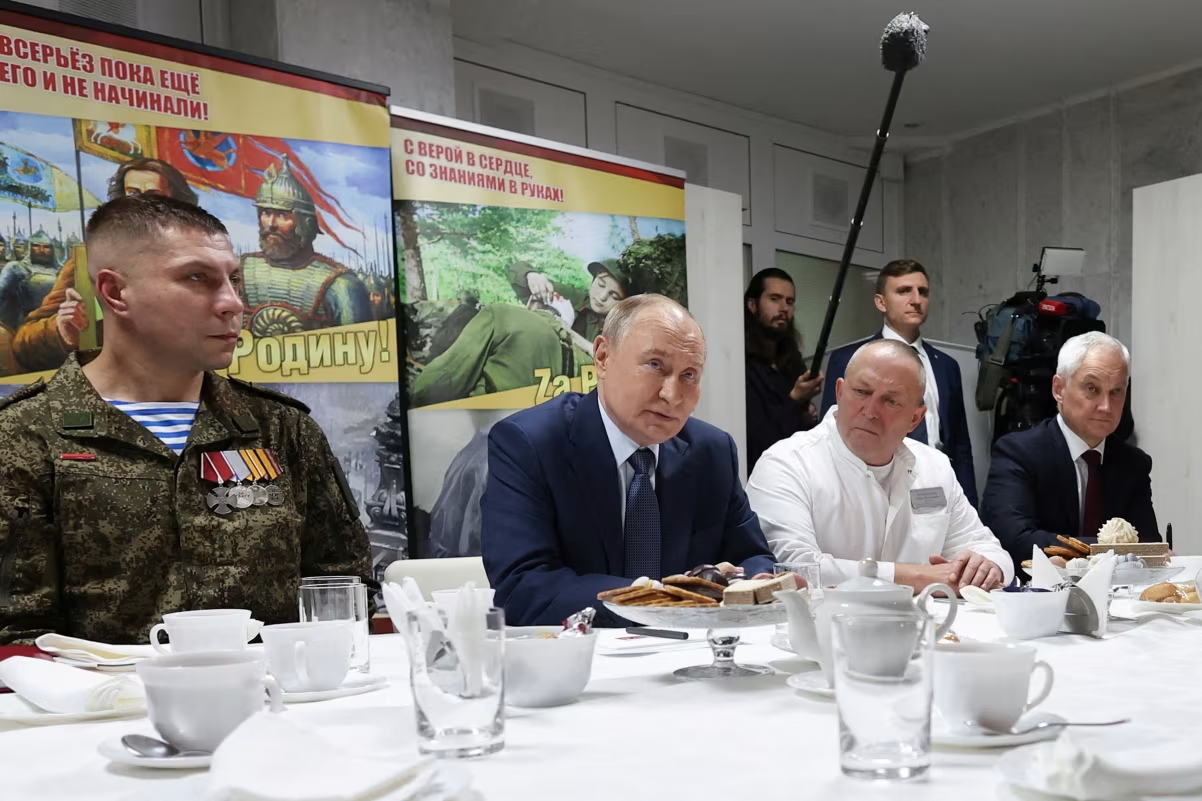Moscow/Washington — The Biden administration appears to have responded to an escalating wave of nuclear rhetoric from the Kremlin, with President Donald Trump announcing plans to restart U.S. nuclear weapons testing for the first time in decades. The move adds fresh tension to an already unstable global nuclear landscape, as both Washington and Moscow signal a willingness to revive Cold War–era capabilities.
In a brief statement posted to social media Thursday, Trump said he had directed the Department of War to resume testing programs “on an equal basis” with adversarial nations. The White House did not immediately clarify whether these would be full-scale nuclear detonations or tests of delivery platforms and warhead systems. Speaking later to reporters in South Korea, Trump dismissed speculation that Beijing was the trigger. “It had to do with others,” he remarked—an unmistakable reference to Moscow.
Putin Unveils New “Invincible” Weaponry
Trump’s decision follows hours after Russian President Vladimir Putin publicly celebrated what he described as a successful test launch of the Poseidon—an experimental nuclear-powered underwater drone with a potential range exceeding 6,000 miles. The announcement came during a heavily choreographed visit to a military hospital in Moscow, where Putin sat alongside wounded Russian servicemen fighting in Ukraine.
According to Putin, the Poseidon’s destructive capacity “significantly exceeds” Russia’s most advanced intercontinental ballistic missiles, and interception would be “impossible.” Military analysts, however, remain divided on the plausibility of those claims.
Just days before, Russia revealed progress on another nuclear-powered system, the Burevestnik cruise missile, which the Kremlin claims can travel subsonically for virtually unlimited distances. Both concepts rely on nuclear propulsion—technology largely abandoned by the United States decades ago due to safety concerns, technical instability, and radioactive contamination risks.
Treaty Limits Slip Toward Expiration
The renewed nuclear bravado arrives as the New START treaty—the last remaining U.S.–Russia arms-control framework—is set to expire in February 2026. Once gone, both nations would be free to deploy unlimited intercontinental-range nuclear weapons.
Putin also hinted that Russia’s massive Sarmat ICBM—dubbed “Satan 2” in the West—would soon enter deployment, marking his second major nuclear boast this week. U.S. intelligence agencies have long considered the system capable of carrying multiple warheads with devastating payloads.
Diplomatic Theater in Real Time
So far, Washington has largely dismissed Moscow’s announcements as theatrics aimed at shaping negotiations on Ukraine. But the latest escalation appears to have shifted the tone in the West Wing.
Frustrated by Russia’s refusal to halt its campaign in Ukraine, Trump had already threatened to cancel an upcoming summit with Putin in Budapest, while sanctioning the nation’s two largest oil companies. In parallel, Putin publicly oversaw “planned” nuclear triad drills involving missile launches from land, sea, and air—images that quickly circulated on Russian state media.
Even that display drew a muted response from the White House.
Loose Talk, Real Consequences
On Monday, speaking aboard Air Force One, Trump criticized Putin’s rhetoric. “He ought to get the war ended,” the president said. “A war that should have taken one week is now in its fourth year.”
Less than 48 hours later, Moscow unveiled the Poseidon test—precisely the kind of nuclear saber-rattling Washington sought to avoid. Analysts suggest the timing placed political pressure on Trump to respond in kind.
For the Kremlin, nuclear announcements serve as a diplomatic lever: cheaper than battlefield escalation, harder for Western leaders to ignore, and capable of stirring public anxiety abroad—all without firing a shot.
A New Era Begins
What may have been intended as leverage over Ukraine could now push the world toward an era of renewed nuclear testing—an outcome few strategists believed likely just years ago.
With arms-control frameworks crumbling and both superpowers leaning on nuclear signaling, the coming months may prove pivotal. The dangers of mixing political frustration with atomic weaponry are becoming clearer—and increasingly difficult to dial back.

